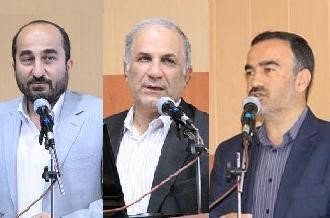Why has SPND's annual budget quadrupled?
Iran Redline usually avoids anything to do with
accounting, and is very happy that our shoestring budget pretty much takes care
of itself.
But when we realized that Iran's national budget contained a specific line item for SPND (سپند) - the notorious defense research organization that houses expertise and technology from Iran's former nuclear weapons program - we just had to take a closer look. Even if that involved a bit of accounting.
But when we realized that Iran's national budget contained a specific line item for SPND (سپند) - the notorious defense research organization that houses expertise and technology from Iran's former nuclear weapons program - we just had to take a closer look. Even if that involved a bit of accounting.
It turns out that SPND is well-funded by
the Iranian state - much more so that we had imagined - and that SPND's budget
has skyrocketed over the past four years. In today's post, we can reveal just
how much Tehran gives SPND to carry out its nefarious activities: almost USD
$21 million per year.
But back to the numbers in a minute. Here's
how we know just how much SPND is getting paid.
Budgets - boring but
important
Every year in about December, Iran's
President submits a budget bill for the forthcoming year to the country's
parliament, the Majlis. And this bill is made public.
The bill then gets fiddled with a bit as it then goes through the parliamentary
process, but by and large the proposed spending figures in it remain intact.
(Defense-related line items in these bills tend to get bigger, thanks to
hardliners and hawks in the legislature who like spending money on the
military.)
The most recent of these bills, for the
Persian year 1399 (that's March 2020 to March 2021 for all you Gregorians), was
released late last year, to much poring over by the nerdy Iran-watching community.
We've read lots
of very good reporting on recent bills, and particularly recommend the Institute for International Security Studies' piece,
which outlines how Iranian defense entities are also able to access
off-the-books money for their various programs outside the regular budget.
The 1398 budget attracted particular
interest, with the big headline being that while the budgets for the IRGC and
Iran's conventional armed forces didn't change much, one massive shift was that
President Rouhani had proposed a fifty percent reduction to the budget of the
Ministry of Defence and Armed Forces Logistics (MODAFL or وزارت دفاع و پشتیبانی
نیروهای مسلح جمهوری اسلامی ایران). MODAFL is the logistics and industrial arm
of Iran's defense program, and is responsible for everything from building
ballistic missiles to trucking around military rations. MODAFL also happens to
be the parent organization of SPND.
What the budget says about
SPND
Did somebody say fifty percent budget cut?
Did somebody say SPND? Could there actually be some sensible Iranian policy-making in the air?
Erm, as it happens - no.
Indeed, it seems that SPND is a bit special
when it comes to Tehran's spending priorities. And that's what some analysts
missed in their initial reporting: not all of MODAFL lost out in the new
budget, and SPND was actually a very big winner.
We've identified in the budget bill and subsequent Majlis-approved budget
of the same year a specific line item for SPND, which shows that the organization's state funding allocation for 1398 (March 2019 to March 2020) was
837 billion rials, or nearly USD $20 million. Here's the proof:
That's almost a 70 percent increase from
the year before, where the budget for SPND was a comparatively meager 500
billion rials (about USD $12 million):
And it's a huge jump from the 1396 budget
(2017-2018), when SPND's budget was only 205 billion rials - just under USD $5
million:
In the more recent budget bill for 1399
(2020-2021), the figure is 878 billion rials, or nearly USD $21 million. So from
1396 to 1399, SPND's budget has more than quadrupled.
What's going on?
We're not quite sure why SPND was
given such a windfall gain, particularly against a backdrop of such harsh cuts
to MODAFL, and SPND's general bumbling and lack of deliverables. But we can
make some educated assessments as to why this is. Here are a couple of them.
First, this budget bonanza means that SPND
has powerful patrons in the Iranian government. We'll quote from the IISS study mentioned earlier:
Iranian budget planning is really the result of factional power brokering and horse-trading rather than a response to the constituents it purports to represent. The ability to commandeer a share of the defense budget should be seen as a barometer for the level of influence or lack thereof of different bodies and institutions.
A seventy percent gain in one year sure as
hell shows a "level of influence".
Second, the budget gain means that the SPND
brand still isn't as toxic as it should be, despite the organization's massive
security failure in losing the so-called Atomic Archive; public exposure of
SPND's senior leadership and their private business ventures; and various other
security blunders by the organization.
Iran Redline wonders if the workers are seeing
any of this extra money in the form of fair pay, or whether it will remain in
the hands of the few “influencers”.
Light,
tunnel, etc
Is there any good news? A little bit. It
may be the case that SPND isn't uniquely popular inside MODAFL - rather, that
SPND was just riding on a wave of Iranian budgetary enthusiasm for the country's
military research institutions.
Here's some evidence for that hypothesis.
Two other organizations from Iran's defense
research sector, the Malek Ashtar University
(دانشگاه مالک اشتر) and
the Imam Hossein University (دانشگاه جامع امام حسين (ع)),
both scored big funding increases in the 1398 budget. Malek Ashtar's budget
shot up by an astounding 85 percent; Imam Hossein's by nearly 80 per cent.
Malek Ashtar and Imam Hossein are basically frenemies of SPND - sometimes they
are research partners, but more often they're competition for scarce resources.
When seen alongside these budget leaps, SPND's windfall gain isn't actually
that special.
And here's the bit we love. Mohsen
Fakhrizadeh's main rival within the MODAFL research establishment, the Defence Industries Training and Research Institute
(MAVT aka DITRI aka DIRTI aka TRIDI aka موسسه آموزشی و تحقیقاتی صنایع دفاعی), still had a bigger budget than SPND.
Sorry, Mohsen!















Comments
Post a Comment